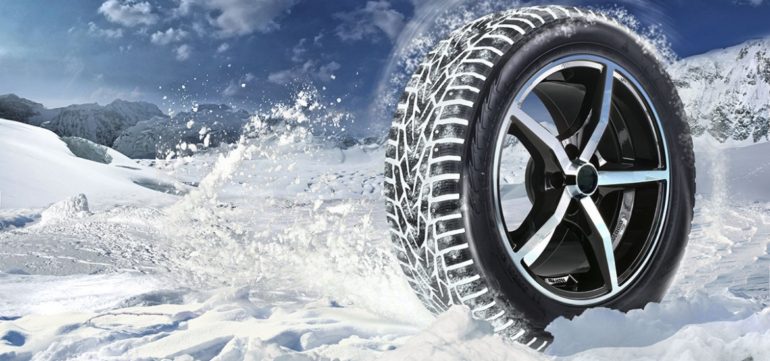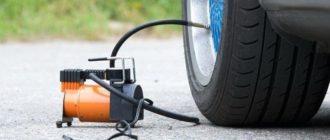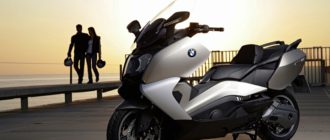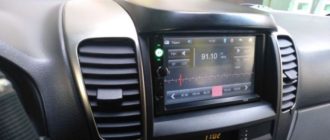The question of choosing winter tires sooner or later confronts every motorist. Today on the market there are a huge number of similar products - spike wheels, all-weather type tires, the so-called Velcro. All winter tires can be divided into two large classes:
- European;
- Scandinavian.
European tires are designed mainly for wet asphalt, light snow cover and air temperature up to -10 degrees. According to buyers, it is not the most suitable for Russian roads, but it has an important advantage - a diagonal tread pattern, it also has grooves for removing moisture. They are convenient to use in the southern regions. In the ranking of the best winter tires, the first places are occupied by Scandinavian models. They are designed for movement on deep snow, ice and a number of other road surfaces. Longitudinal patterns are not provided here, they have a peculiar tread pattern, which is staggered. This allows you to easily maintain control of the car even while driving on the most problematic surfaces such as loose snow. In the top 10 models of winter tires, most of the places are occupied by just such models, in addition, they have an excellent price-quality ratio.
Summary of the rating:
What to look for when buying winter tires?
When choosing winter tires, be sure to pay attention to the following product parameters:
- The maximum level of load that the tire is able to withstand;
- Resistance to wear;
- Speed index.
All this information is on the label indicated directly on the tires themselves. Wear resistance is defined under the Treadwear label. Dealing with this quality is very simple - 100 units are equivalent to 50,000 kilometers. The situation is much more complicated with the load, since it is necessary to take into account the mass of the vehicle. This parameter must be equal to at least one third of the vehicle in a fully equipped state. The third important quality of tires, which is taken into account when choosing a speed index. He also found reflection in the marking on rubber. For Russian roads, the best indicator is S. These tires do not impair the speed characteristics of the car, but they have good wear indicators.
The rating shows the most popular brands and models of winter tires among Russian motorists. Their key operational characteristics, positive and negative properties are discussed here.
Rating of winter tires models TOP-10
10. Nokian Hakkapeliitta 8 SUV
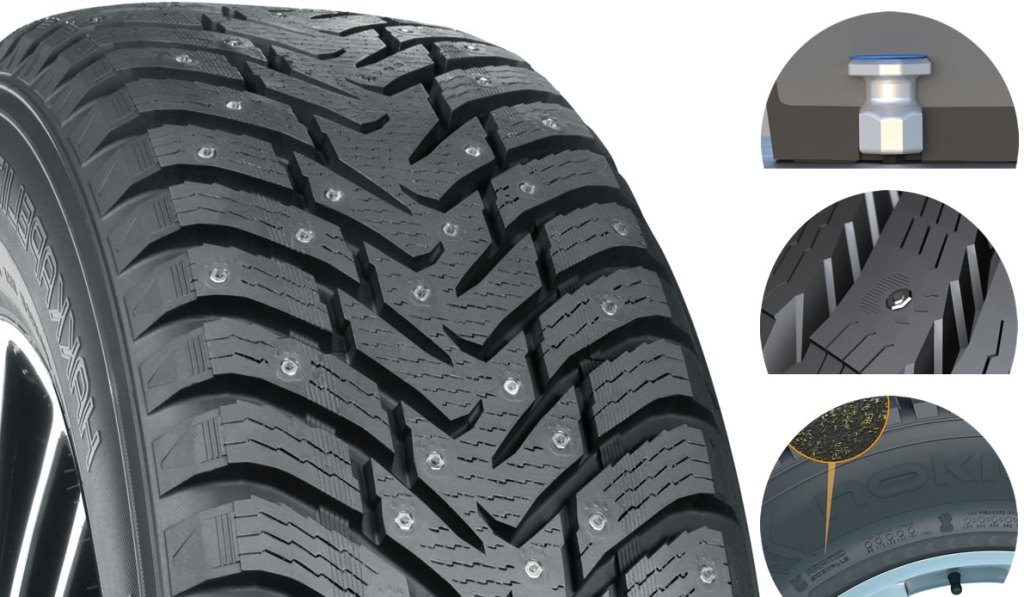
Additionally reinforced with aramid fibers. It is designed specifically for harsh climates. This rubber needs a special break-in, after which it will be possible to evaluate all its positive qualities.
Benefits:
- Perfectly adheres to any coatings;
- It has a reinforced sidewall;
- It brakes well on dry pavement;
- Wear out long enough.
Disadvantages:
- It emits a low noise during break-in;
- It is quite expensive.
Otherwise, this winter tires, according to reviews, is very good for snow, ice and asphalt, that is, for any coating of the cold season.
9. Nokian Hakkapeliitta R2
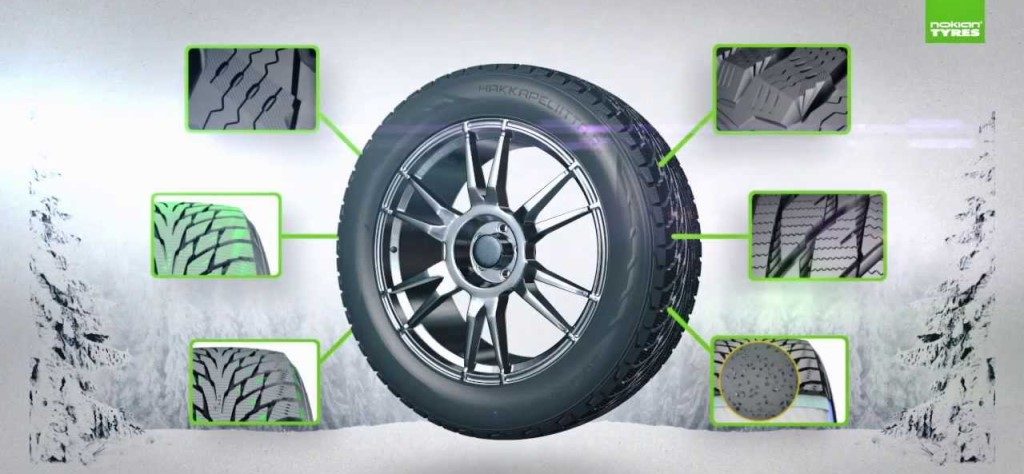
One of the latest developments, created specifically for SUVs or crossovers. It is believed that this is the best non-studded winter tires.The tread pattern is symmetrical, special crystal particles are added to the rubber, a significant number of lamellas are also provided, thanks to which the rubber will easily resist even bad road conditions, including ice porridge or slush.
Benefits:
- Treads grip very well;
- Rubber feels great even in a rut;
- A car with such tires will stop quickly on ice, thick snow, dry or wet asphalt;
- The use of rubber does not affect the performance of the vehicle;
- It has moderate softness, does not emit extraneous noise during riding;
- Reinforced sidewall of the tire, which allows you to quickly and without skidding out of the track;
- Long service life.
Disadvantages:
- High price;
- It does not always behave confidently on sharp turns with asphalt pavement.
8. Cordiant Snow Cross

Designed specifically for snow cover. The developers specifically made a strictly directional tread pattern, the central element of which is a closed rib. It significantly reduces the likelihood of skidding on the snow cover.
Benefits:
- Low cost;
- A small braking distance even on an icy road;
- Well suited for snowy dirt roads.
Disadvantages:
- Uncertain behavior on asphalt;
- The spikes do not hold too firmly and often fly out, especially on ice or on the asphalt during sudden braking.
Disadvantages shorten the wear of rubber, reduce its service life.
7. Goodyear Ultra Grip Ice Arctic
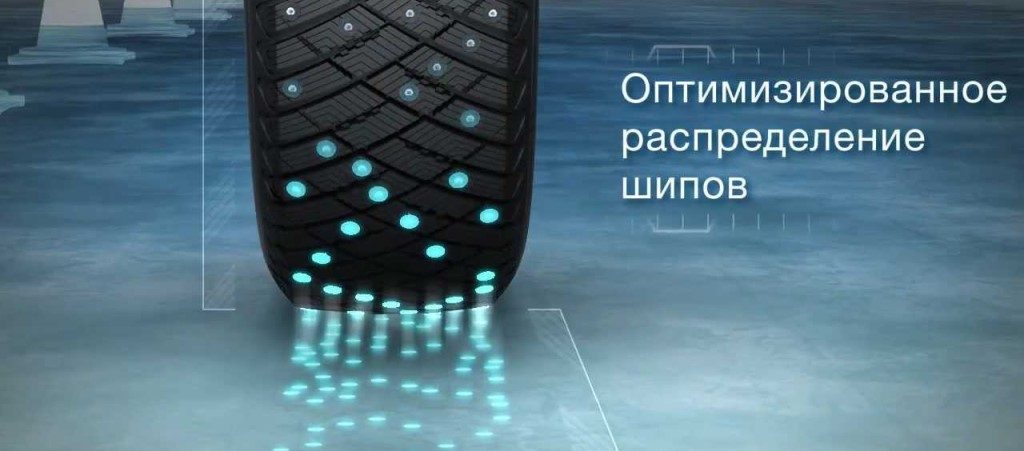
Designed directly for harsh winter conditions. Rubber has very original spikes with sharp edges that behave very well on ice.
Benefits:
- Easily removes slush and moisture from the grip;
- Perfectly slows down even on ice;
- Holds the road well, does not wobble;
- Does not impair vehicle handling;
- After the break-in is practically no noise;
- On a flat and dry asphalt, it behaves almost like a summer one;
- Wear slowly;
- It has strong spikes;
- Well suited for extreme north conditions.
Disadvantages:
- In a rut does not behave too confidently, a high probability of slipping;
- The sidewall is quite soft, because of which hernias can occur.
6. Yokohama Ice Guard IG55

Represents one of the most popular models in an inexpensive segment. The production of such tires spread quite widely, which is why certain problems arise. Motorists say that acquiring high-quality and original rubber of this model is a real success, since there are quite a lot of fake products on the market. If we consider the original rubber, it combines the best qualities: It does not affect the performance of the car, provides excellent cross-country ability in snowy areas, and behaves well even in the city. On ice, he can show himself not too confidently.
Benefits:
- Good level of wear resistance;
- Wide use;
- When driving, it produces a minimum amount of noise;
- It behaves well in fairly difficult areas;
- It shows itself well in the city.
Disadvantages:
- There is a great chance to buy low-quality products that will behave on the road much worse than the original;
- It behaves quite nervously on the ice, because of which the car can go into a strong drift, therefore it is not recommended to develop too high a speed - optimally 60 km / h.
5. Hankook Tire Winter i * Pike RS W419
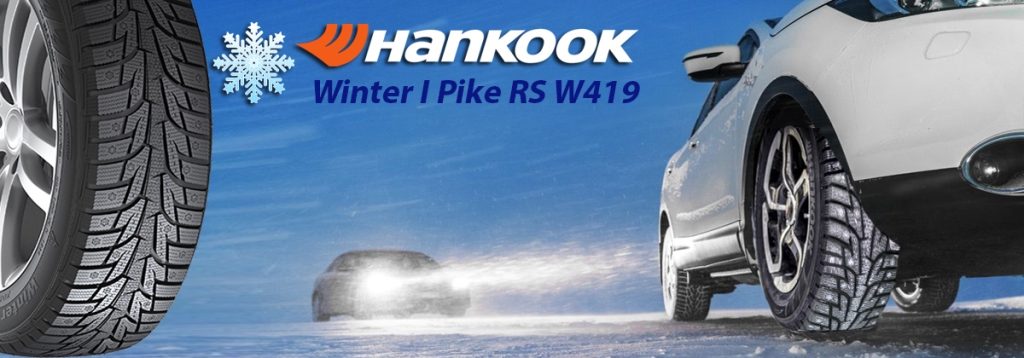
At first, this rubber was met by motorists with a high degree of skepticism, but most of them almost immediately changed their minds about this product. Best of all, these tires behave on unclean, icy or slippery roads covered with snow. Rubber perfectly passes through all difficult areas due to the fact that it is equipped with spikes and has a large contact area of rubber with the base.
On the tire there is a significant amount of sharp edges, thanks to which it will easily pass areas covered with loose and deep snow, which is usually typical for off-road conditions. It turns out that this model is perfect for urban conditions, and for dirt roads or for off-road.
Benefits:
- It is not too expensive;
- It adheres perfectly to the roadbed of various types, even if it is covered with a lot of snow;
- The rubber is quite soft, which ensures tight contact of the wheel with the surface of the base;
- Almost no noise during the ride, which is uncharacteristic for winter tires.
Disadvantages:
- Too soft - this can adversely affect when driving on an icy road or on a dirt road.
4. Nokian Nordman 7
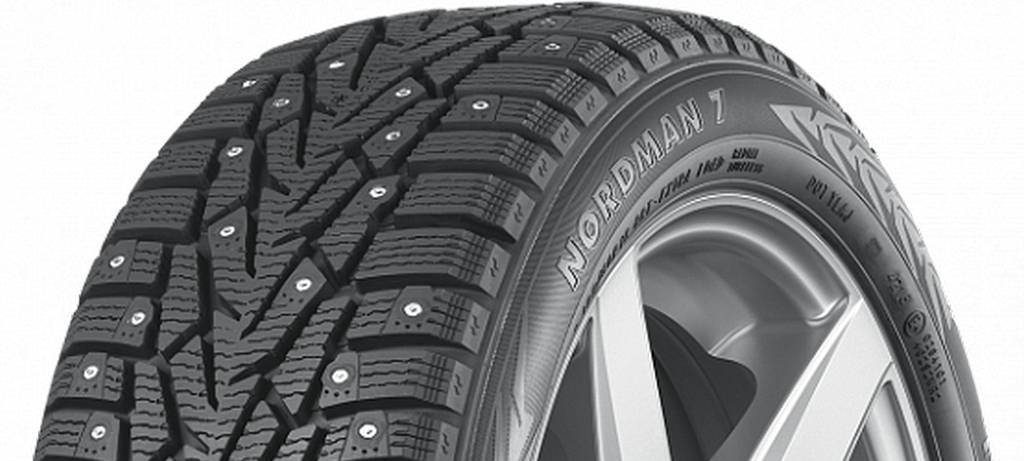
It is a fairly budget option, and this rubber will behave perfectly on wet asphalt even in winter, however, users do not recommend to accelerate above 100 km / h when installing it. Such rubber is perfect for urban residents who use the car not too often in the format of a home-cottage-work-shop. The rubber itself is quite soft, which provides a significant area of contact with the road.
Benefits:
- Low cost;
- Rubber hardly resists rolling;
- It behaves very well on a flat road surface;
- Wear out slowly during operation;
- Does not make much noise;
- Does not affect the performance of the vehicle.
Disadvantages:
- During the thaw, the rubber becomes too soft;
- It does not behave too well on dirt roads, especially if they are very cold;
- When using this rubber, it is undesirable to accelerate too much and brake sharply. This is due to the high level of softness - the car can greatly drag and lead to an emergency or even accident.
3. Nokian Hakkapeliitta 8

Differs in high quality and reliability. During production, rubber is further reinforced with aramid fibers, which can increase the wear resistance of products. This model is considered the best winter studded tires. Such tires are designed specifically for quite severe winter conditions. Sizes from 15 to 21 inches can be found on sale. After installation, it needs a run-in, after which it will be possible to fully appreciate all of its positive characteristics.
Benefits:
- Excellent road holding in any conditions, including on snow or ice;
- It has a high level of rigidity;
- It behaves well even on dry and not frozen asphalt;
- This rubber does not affect the handling of the vehicle, regardless of the complexity of the weather;
- It wears out very slowly - with careful driving it can last about 10 seasons;
- It does not make extraneous noise, does not bounce on bumps and behaves as comfortable as possible;
- The spikes hold pretty firmly;
- With ease removes moisture, slush or snow porridge from under itself.
Disadvantages:
- Significant cost;
- Due to the reinforced sidewalls, it does not always behave confidently in a rut;
- When running in, it produces a slight hum, but you can completely ignore it, especially if the cabin provides good sound insulation;
- During the installation, it will have to be balanced.
2. Pirelli Ice Zero
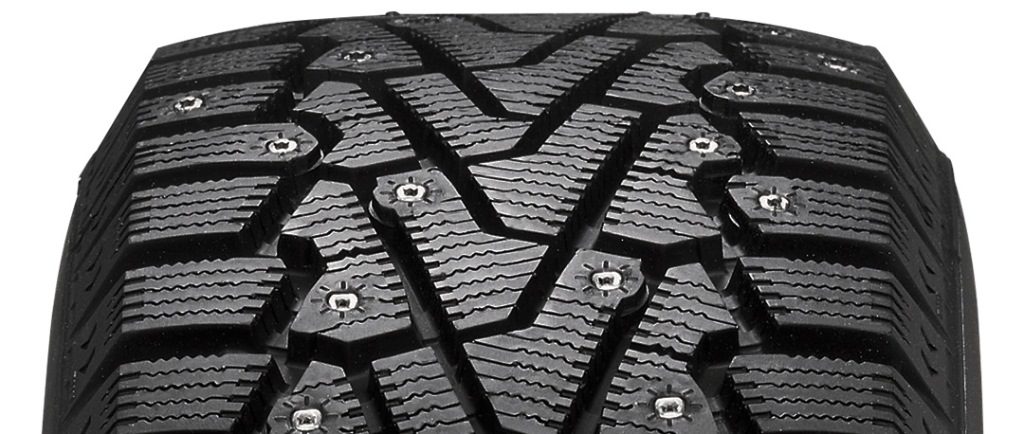
It is a product of Italian production, the manufacture of which attracts only the most advanced technologies. This is especially true for spikes equipped with a double core. Also, rubber has a significant number of blocks of various shapes, the tread pattern is made in the form of the letter V. It is considered the best winter Velcro rubber.
Benefits:
- Excellent value for money;
- Low braking distance on any surface;
- The absence of spikes allows you to grasp well with asphalt, loose snow.
- They hold the road very well and adhere to it reliably.
Disadvantages:
- It behaves worst of all during slush and in ice porridge - a consequence of the absence of thorns;
- It becomes excessively soft at a positive air temperature;
- During the break-in, it makes an unpleasant noise, but this phenomenon is temporary, after the first thousand kilometers the sound will disappear.
1. Nokian Tires Nordman 5
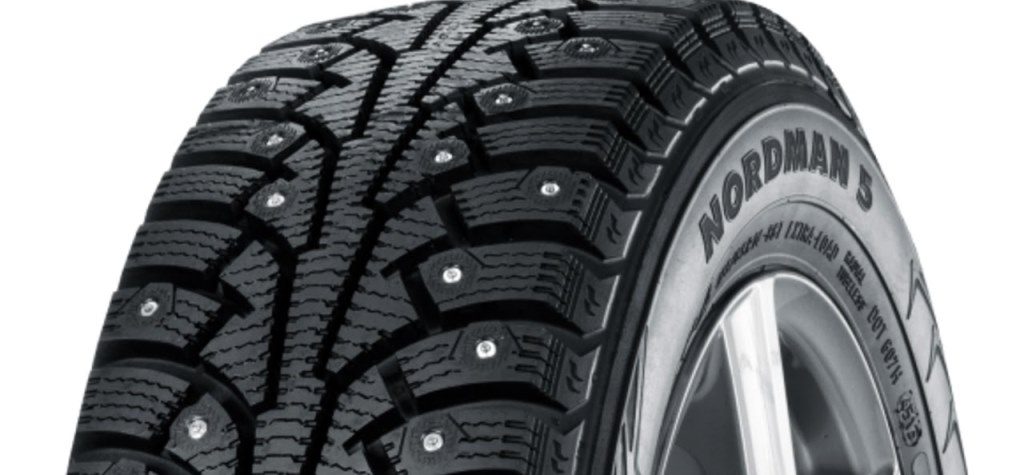
It is one of the most common - motorists consider this model the best winter tires. It is made from the most modern materials, in addition, its manufacture uses modern technology called the “Bear Claw”. With its help, rubber behaves much better on an icy or snowy road. The spikes here do not sag under the mass of the car and maintain a vertical position, due to which the adhesion to the road surface is much better.
It is inexpensive, practically does not resist rolling. Tires have good performance and excellent grip on the road surface. They can last about 10 seasons and do not make too much noise, and also practically do not affect the control of the machine.
Benefits:
- It has good rigidity even at plus temperature;
- Passes well on ice or loose snow;
- It has special tubules for removing slush or snow from under the wheels;
- The spikes have an original shape, do not crash even when driving on asphalt;
- Rubber can withstand a significant mass of the car - up to 2.5-3 tons;
- It can be used for off-road driving.
Disadvantages:
- Domestic production;
- Not too high stability in relation to the preservation of the course;
- Rubber is prone to sideways demolition;
- You must be very careful when braking abruptly, as a car equipped with this rubber can suffer a lot. Often, rubber behaves in a similar way even when it stops smoothly, for example, near a traffic light.
Conclusions and video
It is not easy to choose the most suitable winter tires, but thanks to the rating of winter studded or studless tires with indication of positive and negative qualities, it becomes much easier. According to the results of professional tests, tires should not be purchased, as they are close to ideal conditions that are not very common in real life. It is more convenient to read reviews of other motorists who have experienced particular models on their own experience. An experienced motorist will quickly appreciate the advantages and disadvantages of any rubber.
A large number of nuances should be taken into account - the country of manufacture, operating conditions, the general declared qualities of tires, the driving style of a motorist, his driving skills and a number of other important factors. You can find out the opinions of other users, as well as share your impressions of winter tires in the comments under this article.

